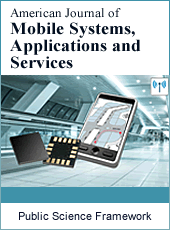American Journal of Mobile Systems, Applications and Services
Articles Information
American Journal of Mobile Systems, Applications and Services, Vol.4, No.1, Mar. 2018, Pub. Date: Aug. 6, 2018
The Application of Information Theory on Antenna
Pages: 1-5 Views: 2261 Downloads: 383
[01]
Ye Yuting, School of Information Engineering, China University of Geosciences, Beijing, China.
[02]
Li Mei, School of Information Engineering, China University of Geosciences, Beijing, China.
Antenna can be viewed as a communication system which plays an increasingly important role in our daily life due to the rapid develop of science and technology recently. As for a communication system, we need to pay attention to its validity and reliability in order to transmit information as both fast and great as possible. According to Shannon theorem, there is a limit on the transmission rate of information in the channel, and we call the limit as channel capacity. To increase the rate of undistorted transmission information, we need to improve the channel capacity according to Shannon Second Formula. At the meanwhile, the requirement of channel effectiveness makes us need to improve the efficiency of the antenna. However, there are contradictions between these two indicators. That is to say, the increase in channel capacity leads to the decrease of antenna efficiency, while the improvement of antenna efficiency must be at the expense of small channel capacity. Therefore, the optimal balance between the channel capacity and the antenna efficiency is found through MATLAB simulation, so as to provide better design ideas for the antenna designers.
Channel Capacity, Antenna Efficiency, Shannon Formula
[01]
Wei Fen, Yun Na. Introduction to basic problems of information theory [J]. Information and control, 1978 (01): 6-10.
[02]
Wang Daqian. Brief and practical application of communication cornerstone information theory [J]. Communication world, 2017 (02): 34-35.
[03]
Zhang Shanshan. Application of information theory [J]. Mass technology, 2011 (07): 45-46.
[04]
Liu Yuanliang, Application of information theory in anti-interference analysis of radar fuze [J]. Tactical missile technology, 2002 (04): 29-33.
[05]
Liu Xueguan Microwave Technique and Antenna [M]. Xi 'an: Xi'an university of electronic science and technology press, 2016.
[06]
Zhou Ye lin. Information theory and its application in scientific research [J]. Southern China today (theoretical innovation edition), 2009 (05): 201-202.
[07]
Ma Hanyan. Antenna technology [M]. Harbin: Harbin Institute of Technology press, 2013.
[08]
Song Zheng, Zhang Jianhua, Huang Ye. Principles of antenna and radio waves [M]. Xi 'an: xi 'an university of electronic science and technology press, 2014.
[09]
Li mei, Li yYinong. The basic course of information theory [M]. Beijing: Beijing university of posts and telecommunications, 2015.
[10]
Fan Changxin, Cao Lina. Communication principle [M]. Beijing: national defense industry press, 2013.

ISSN Print: 2471-7282
ISSN Online: 2471-7290
Current Issue:
Vol. 5, Issue 1, March Submit a Manuscript Join Editorial Board Join Reviewer Team
ISSN Online: 2471-7290
Current Issue:
Vol. 5, Issue 1, March Submit a Manuscript Join Editorial Board Join Reviewer Team
| About This Journal |
| All Issues |
| Open Access |
| Indexing |
| Payment Information |
| Author Guidelines |
| Review Process |
| Publication Ethics |
| Editorial Board |
| Peer Reviewers |


